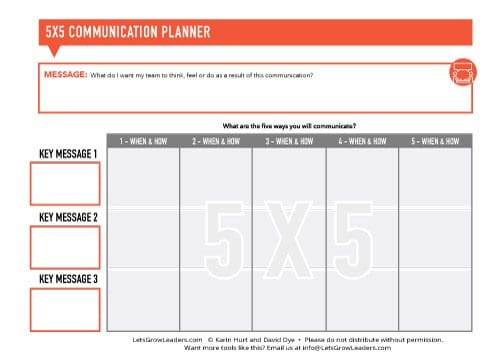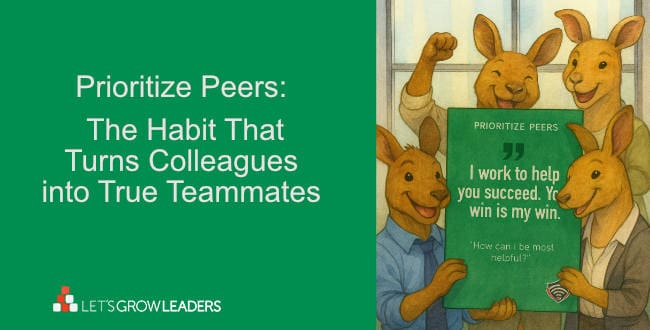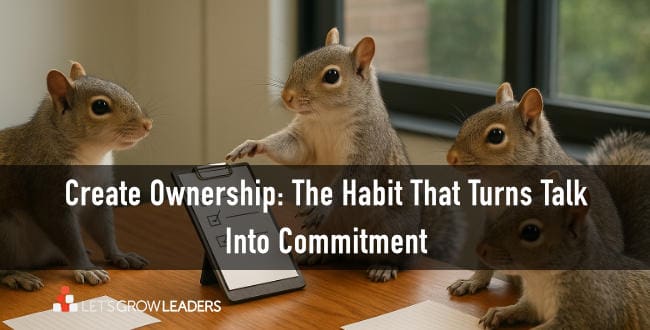The right communication strategy helps your message cut through noise and distraction.
You’ve said it. You’ve said it again. And yet, somehow, people still don’t seem to know what’s going on. If you’re ever frustrated that your team doesn’t act on important priorities, you’re not alone. Leaders everywhere wrestle with getting their message to stick. That’s where your 5×5 Communication Strategy comes in.
5×5 communication means that you communicate your most important messages five times, in five different ways. A 5×5 communication strategy ensures your team and organization internalize those critical messages.
When No One Seems to Get It

Too often, leaders assume that because they said something once, people heard it, understood it, and will act on it. But people are busy. They’re flooded with information, juggling priorities, fighting fires, and moving fast. What you said in last week’s meeting might have been clear in the moment, but say it only once, and that message quickly fades into the background.
And if your people haven’t internalized critical messages, that means you have work to do in how—and what—you communicate.
For more examples, watch this video on the left.
Why 5×5 Communication Works
When we first explain 5×5 communication to new managers, sometimes they reply, “Do I really need to say something five times? Isn’t that excessive?”
The short answer is no, it’s not. And for the most critical messages, five times is just a beginning.
The reason begins with how people build memories and retain information. It’s no exaggeration to say that every time you form a memory, your brain changes. You literally build new connections (or strengthen existing connections) between neurons.
Four Ways to Build Memory
As a leader focused on building an effective communication strategy, four of the most important memory-building principles for you are recency, repetition, recall, and emotion.
Recency
One way to spark memory is through recent experience. You probably remember what you had for breakfast today … but lunch three weeks ago is likely fuzzier.
Repetition
It’s easier to remember what you encounter more often. Hear a song once and you might say “that’s a nice song.” Hear that song ten times and it might not leave your mind for a week–whether or not you want it to.
Recall
One way we strengthen memories and retain information is by accessing it. When you have to recall the information to answer a question or do your work, you are more likely to retain it. (An addition benefit of checking for understanding.)
Emotion
Emotion has a powerful effect on memory. If you reflect back on a time you experienced a strong emotion, you probably remember more about your surroundings. For example, I (David) have been in many high school auditoriums, but I still remember details of the auditorium where I learned I’d won my first multi-state high school debate tournament.
Effective leaders don’t leave these memory enhancers to chance. You can build processes and plan your remote team communication strategies to leverage these characteristics of memory.
How a 5×5 Communication Strategy Builds Memories
Saying something once, in one way, isn’t enough. People process information differently, and they need repetition to absorb it. That’s why five different channels matter.
Communicating a key message five different times taps into recency and repetition. When you use five different channels, or ways of communicating, you can leverage recall and emotion to help people build memories.
Here’s a sample 5×5 communication strategy and how each step helps team members internalize the message:
- Monthly Team Meeting—first communication, includes a powerful “why” and how the change fits into existing work and makes it easier.
[This is the first Repetition and includes some Emotion since it makes work easier.]
- Weekly One-on-One—second communication. The manager asks the team member to describe the change in their own words and ask any questions they have.
[Repetition, increases Recency, and includes Recall]
- Video Update—third communication. Two weeks after the initial meeting, the manager sends the team a quick phone-video message through their IM channel, celebrating progress and early wins.
[This is the third communication. It leverages Repetition, Recency, and Emotion.]
- Team Sharing—fourth communication. The manager invites team members to share how they implemented the new process and solved key problems.
[This is the fourth communication. It leverages Repetition, Recency, Recall, and Emotion.]
- Town Hall Celebration—fifth communication. The manager surprises the team during an all-hands meeting by celebrating their effort and having the CEO congratulate the team for their achievement with the new process.
[This is the fifth communication. It leverages Repetition, Recency, and Emotion]
You can use the 5×5 Communication Planner to build your communication strategy:

Bringing it All Together: What to Include in Your 5×5 Team Communication Strategy
For your 5×5 communication to stick and change behavior, you need to communicate consistently, clearly, and in a way that helps your team answer three questions:
- Why the message matters?
- How the message fits in with existing work and strategies?
- What to do next?
1. Communicate the “Why”—Context is Everything
Before you even think about the logistics of a project or task, people need to understand why it matters.
- How does this fit into the bigger picture?
- Why should they care?
- What problem does it solve?
It’s easy to jump straight to “Here’s what we need to do,” but without context, your team is just checking boxes. To create those “aha” moments and build connection, start with the why.
Let’s say you’re launching a new customer service initiative. Instead of saying, “We need to respond to customer inquiries faster,” explain:
“We’re losing customers because they aren’t getting the timely support they need. Our new service goal isn’t just about speed—it’s about building trust and keeping our customers coming back.”
By starting with why, you give people a reason to care. And when people care, they act with more urgency and ownership.
2. Connect to Existing Work—Avoid the “One More Thing” Syndrome
One of the biggest reasons initiatives fail is that they feel like extra work rather than integrated priorities.
Your team is already busy. If they see your message as just another task on top of everything else, it slips to the end of the list.
Instead, connect the dots between what you’re asking and what they’re already doing.
For example, instead of saying, “We need to improve collaboration between teams,” try:
“You’re already doing great work solving customer issues. If we tighten communication with the sales team, we can resolve problems even faster and make your job easier.”
When people see how a change fits into their existing workflow (rather than disrupting it), they’re far more likely to understand and internalize the change.
3. Address What’s Next—Answer ‘How do I act on this?’
Even the most motivated people need to understand how an initiative affects them personally. They may see the benefit in a general sense, but what does the change require of them? How do they implement or support it in their work?
To make your message stick, tailor it to different audiences.
For example, if you’re rolling out a new project management tool, instead of telling everyone generally, “We’re switching systems next month,” say:
Right now, I know you’re spending too much time chasing updates. With this tool, you’ll have everything in one place, so you can focus on the work that really matters.
If you’re a manager, you’ll need to schedule 90 minutes of training for your team and create two hours of white space for each team member next month.
For team members, plan on those 90 minutes of training, and then use that two hours to run them side-by-side so you can get used to the new system and make sure we answer all your questions.
When people know specifically what they should do, they’re far more likely to embrace it.
Don’t Stop with 5×5
After you implement your 5×5 communication strategy, you can continue to support, reinforce, and enhance your communication by:
- Modeling the behavior—If you’re asking for faster decision-making, show that you’re making decisions quickly, too.
- Checking in regularly—Ask, “How’s it going?” “What’s getting in your way?” “What’s working well?”
- Celebrating progress—Recognize early adopters and share success stories to keep momentum going.
When people see consistent reinforcement, they know it’s not just another “flavor of the month” initiative—this matters.
Make a 5×5 Communication Strategy Work for You
Using 5×5 Communication doesn’t mean you need to micromanage or overwhelm your team with endless reminders. It’s about being intentional and strategic in how you share your message.
So next time you need people to take action, ask yourself:
- Have I clearly communicated why this matters?
- Have I shared the message in five different ways?
- Have I connected it to their existing work?
- Have I made the next steps clear?
- Am I reinforcing and following up consistently?
When you communicate this way, your team won’t just hear your message—they’ll act on it.
And that’s how genuine change happens.
Your Turn: What’s One Message You Need to Reinforce Right Now?
Think about an initiative, priority, or project that hasn’t gained traction. How can you use 5×5 Communication to make it stick?
Drop a comment below—we’d love to hear how you’re putting it into action!
For More Critical Leadership Communication Strategies:








0 Comments